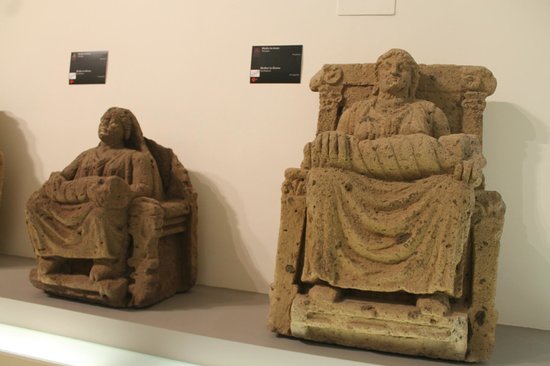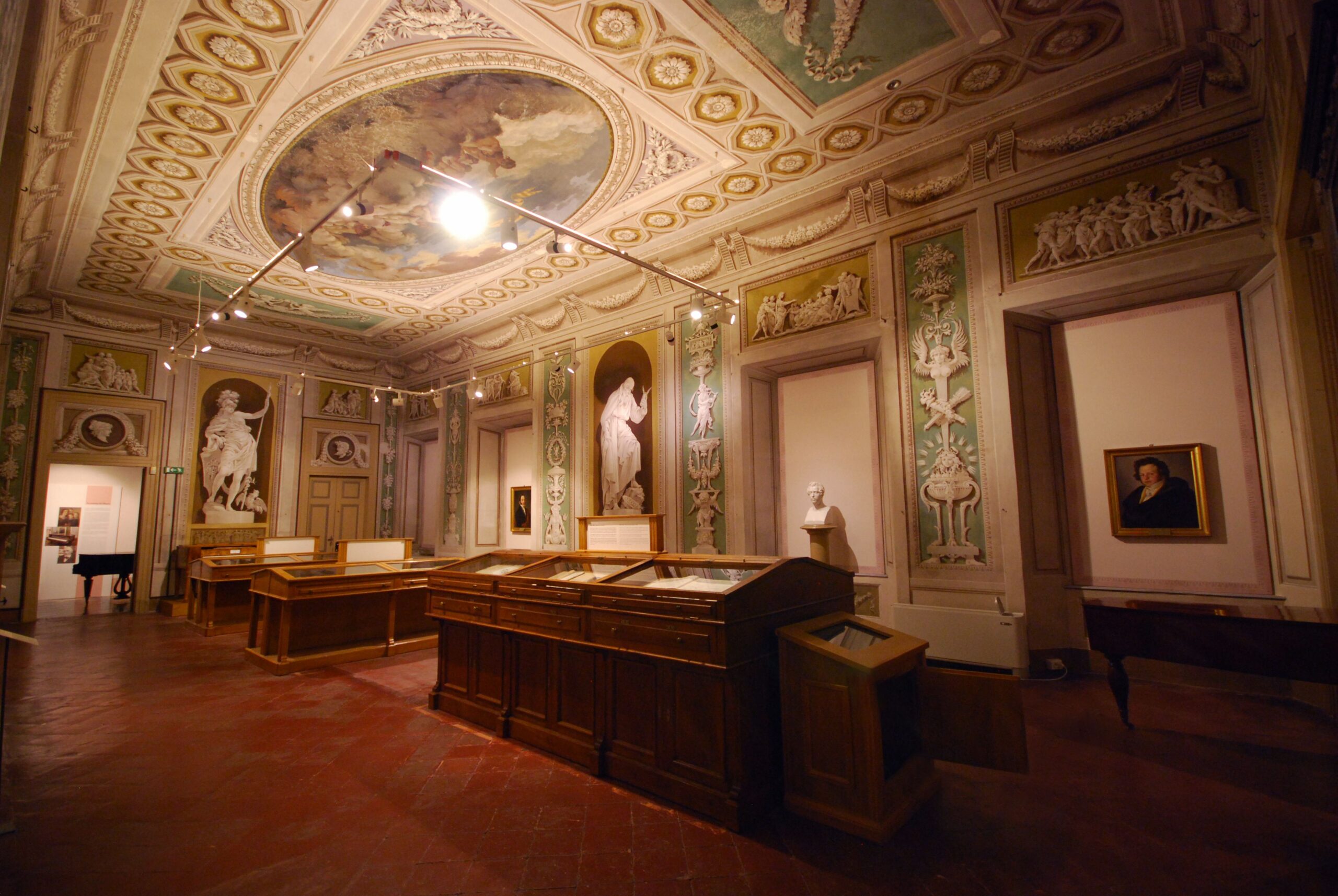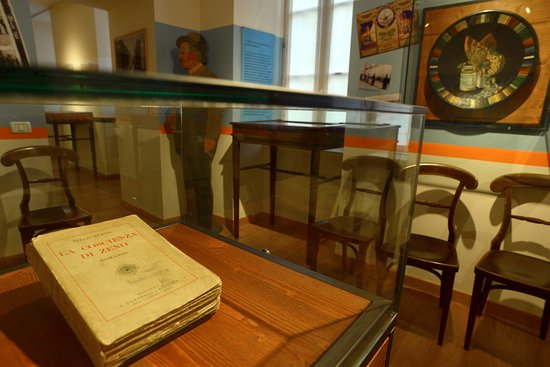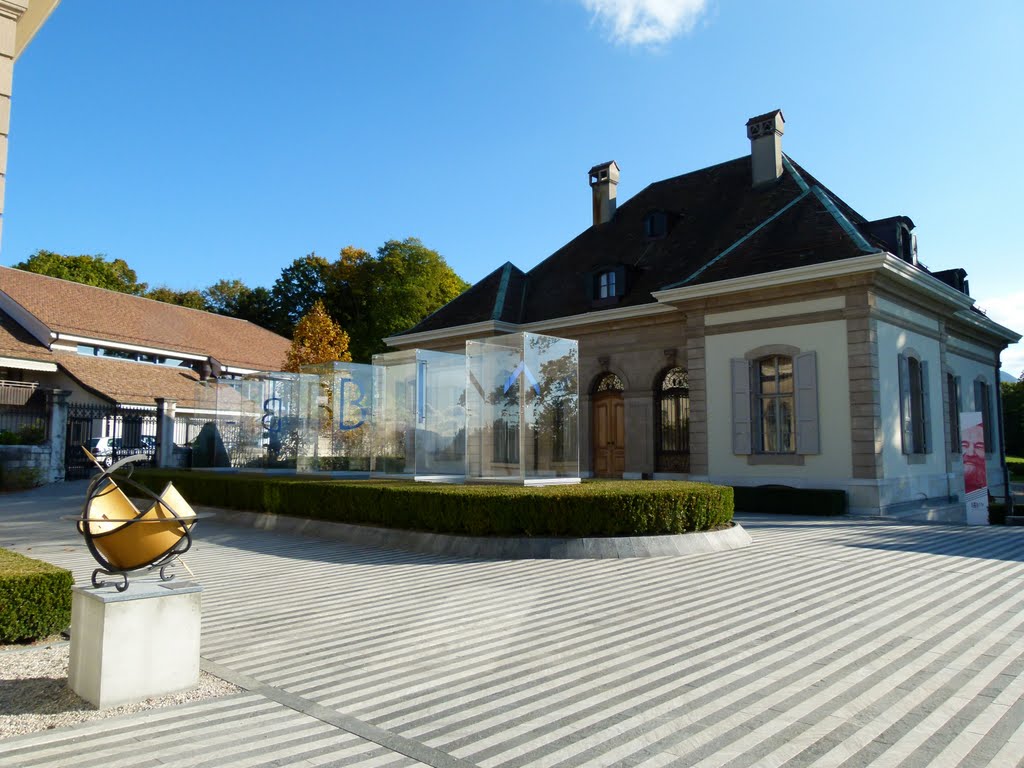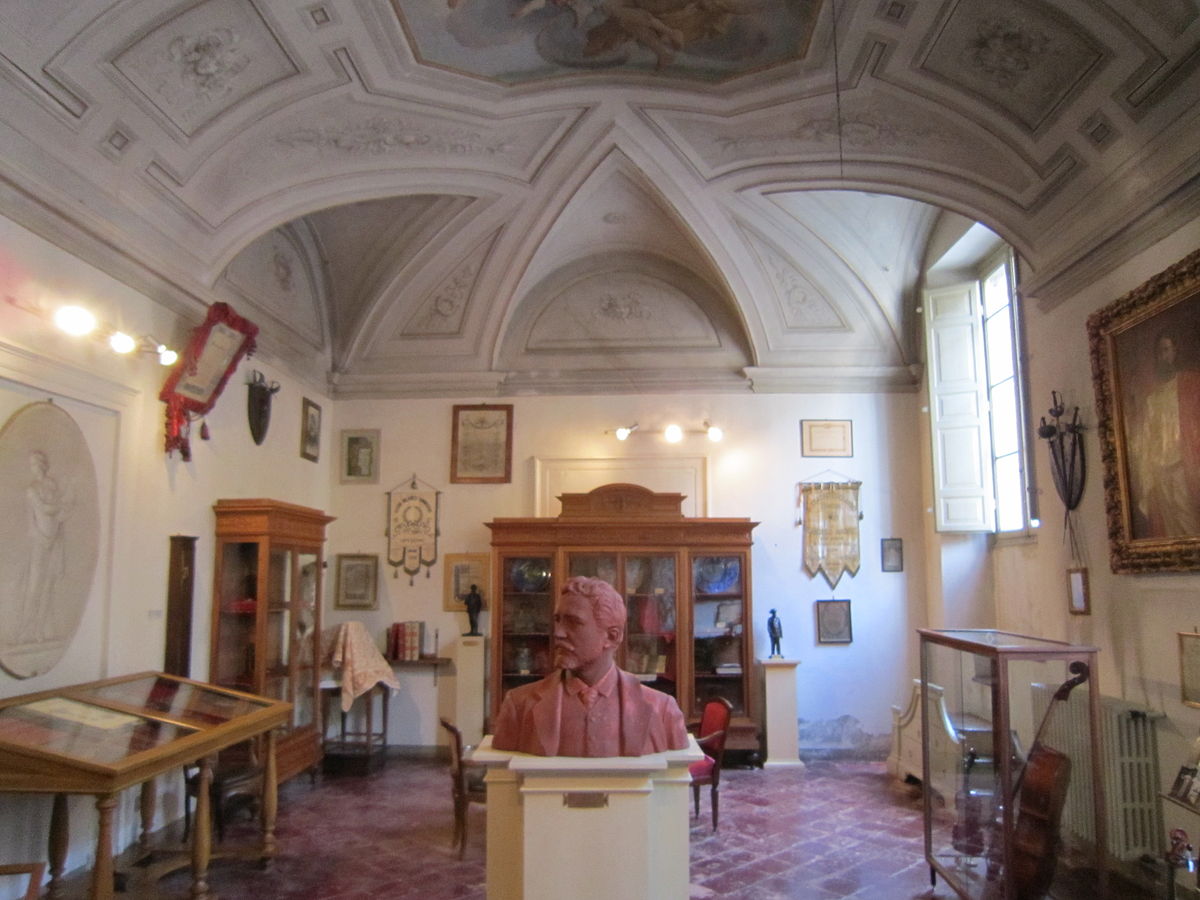The Matres Matutae are Kourotròpoi or statues of women sitting on thrones, legs slightly apart and with two children in swaddling clothes. Made of tuff, their discovery was unique not only for their archaeological value, but also for the unique history behind them. In 1845 the architect Carlo Patturelli, who had participated in the works for the Royal Palace of Caserta, intended to build a small villa in his own grounds, in the locality of Petrara, in what is now Curti. During the excavations, several finds of monumental value and an extraordinary quantity of objects were discovered: figured terracottas of all kinds, jewels and finally statues of female subjects almost all with the same identical posture, the Matres Matutae. These, considered devoid of any classical elegance, were buried again because of architect Patturelli’s fear of losing the property. For several years the mothers remained hidden until 1873, when Patturelli himself encouraged the rediscovery of the works, and the large number of statues and monumental objects found confirm the existence of a sanctuary. Despite the many works brought to light, however, to date no historical or literary evidence of the structure has been found. This has made it impossible to trace several details of the sanctuary, including the plan, but who is the Mater Matuta? The cult of the Great Mother – or Great Goddess – has its roots in distant, prehistoric times, and is typical of the Mediterranean reality. Over the centuries this cult has spread involving all the great civilizations of the past. The Mater Matuta, in particular, is a singular variant of Italic origin, which later became part of the Roman world. In mythology in Rome, Mater Matuta was the goddess of the Morning or of Dawn, the mother of the beginning, of life, and in a narrower sense of fertility.ulla collection of Matres Matutae di Capua there are several theories. The enormous number of statues, of all sizes, suggests that they are artefacts offered by the population to a single Mater Matuta, to whom the sanctuary was perhaps dedicated, as an ex-voto to give thanks for the happy birth. There is also a theory that refers these finds to the cult of Ceres. This is because the Mater Matuta bell was depicted holding a dove and a pomegranate, the latter being the symbol of the goddess of the earth. And given the great diffusion in Campania of temples and celebrations in honour of this figure, some scholars have put forward this hypothesis. To date that of Matres Matutae is one of the most important collections in the world, and a source of pride for the whole city of Capua.
